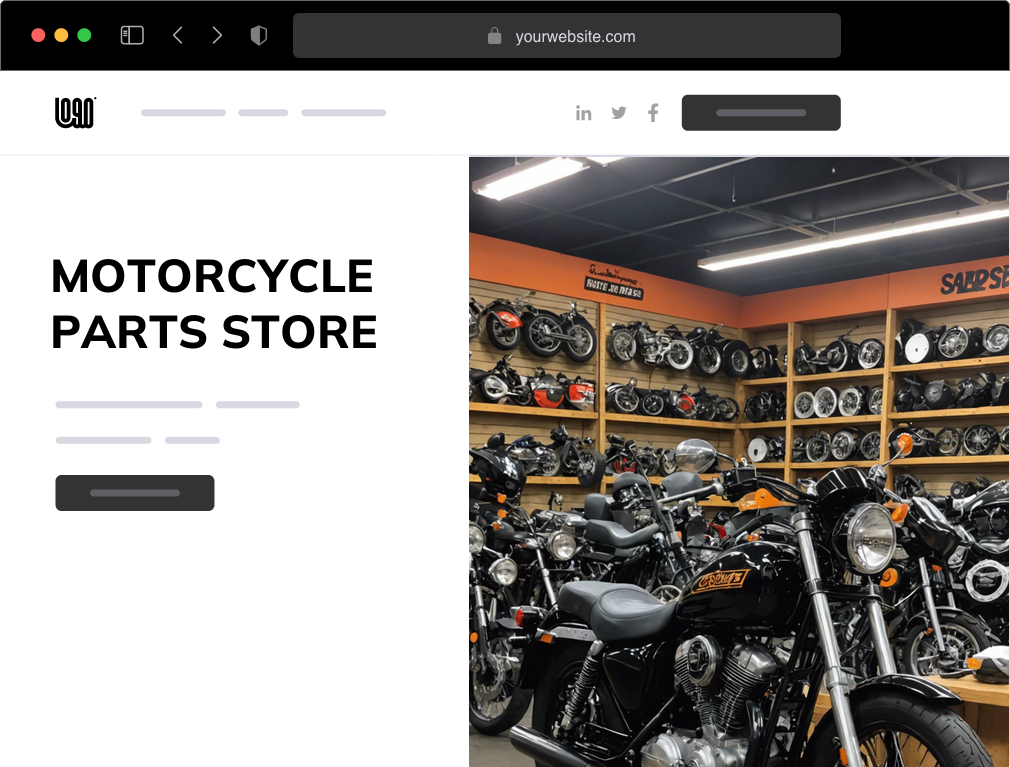Find Affordable Prices on Motocross Parts NZ for each Bike
Find Affordable Prices on Motocross Parts NZ for each Bike
Blog Article
Understanding Bike Gears: Exactly How to Maximize Your Riding Experience
In the realm of motorcycling, mastering the art of equipment control is important for improving your riding efficiency. Correctly making use of and recognizing bike equipments can substantially affect fuel, control, and velocity efficiency, changing an ordinary adventure into a smooth, electrifying trip. By integrating specific change timing and adapting equipment option to different road problems, bikers can guarantee optimal engine performance and security. The subtleties of clutch control, throttle control, and equipment mechanics beckon a deeper exploration, promising to open the complete capacity of your equipment. How can these strategies be utilized to genuinely maximize your riding experience?
Recognizing Equipment Mechanics
At the core of motorcycle dynamics, gear auto mechanics play a pivotal duty in converting engine power right into motion, inevitably dictating rate and control. The gear proportions, meticulously developed, establish the connection between engine transformations and wheel turns, affecting acceleration and gas performance.
Understanding equipment mechanics begins with recognizing the significance of the gearbox, which houses numerous gears of differing dimensions. These gears interact via a process known as meshing, where teeth of different gears engage to transfer power.
In addition, the concept of gear shifting is indispensable to optimizing efficiency. Prompt and smooth changes ensure that the engine runs within its optimum power band, protecting against unneeded stress and improving long life (moto parts nz). By understanding these mechanical details, motorcyclists can attain an unified blend of control, power, and efficiency, elevating their riding experience
Timing Your Shifts
Shift timing proficiency is vital for maximizing bike efficiency and improving the riding experience. Appropriately timed changes ensure that the engine runs within its ideal power band, which is critical for preserving control, achieving smooth velocity, and making sure the durability of the bike. Riders need to establish an intuitive sense of when to shift gears, which includes understanding the partnership between engine revolutions per min (RPM) and rate.
To grasp shift timing, pay close attention to the engine's noise and really feel, as these supply vital hints about when to change gears. When the engine comes close to the upper range of its power band without getting to the redline, the ideal shift factor generally occurs - motorcycle parts nz. Changing prematurely can bring about a lack of power, while shifting far too late might create unnecessary engine stress
Furthermore, road conditions and riding style influence change timing. In metropolitan setups, smoother and more regular changes may be required to browse web traffic successfully. In comparison, during highway riding, fewer changes at greater rates can be better suited. Exercising in different settings will improve your capability to time shifts specifically, inevitably elevating your riding experience to an expert level.
Enhancing Gas Effectiveness
While mastering bike equipments is critical for performance, boosting gas effectiveness is similarly crucial for both environmental and financial reasons. Optimum gas usage not only reduces operational expenses but likewise reduces the ecological footprint of riding. To attain this, one need to recognize the intricate partnership between equipment selection and engine efficiency.
Firstly, choosing the right gear at ideal speeds can dramatically affect fuel usage. Riding in a greater equipment at reduced rates can lead to engine hauling, which is harmful to both gas economic climate and engine wellness. Conversely, riding in lower equipments at broadband results in unneeded gas intake. Therefore, keeping an optimal balance by moving equipments in placement with roadway conditions and prepared for maneuvers is important.
In addition, routine maintenance plays a pivotal function in gas efficiency. Ensuring that the motorcycle is well-tuned, with tidy air filters discover here and properly pumped up tires, can boost the rules of aerodynamics and reduce fuel wastage. Furthermore, taking on a riding style that accepts steady velocity and smooth deceleration can add to better gas economy.
Methods for Smooth Transitions
Attaining smooth equipment changes is fundamental to boosting the riding experience and making sure the longevity of a bike's transmission system. Proper equipment changing not just contributes to a seamless ride but also minimizes damage on the mechanical parts. To master the art of smooth shifts, cyclists should concentrate on a few vital techniques.

Second of all, clutch control plays an essential duty. Engaging and disengaging the clutch efficiently calls for technique. The clutch bar ought to be released gradually, permitting a seamless transfer of power from the engine to the wheels without creating a jolt or sudden motion.

Adapting to Roadway Conditions
Browsing varied road conditions is an essential skill for any kind of motorcyclist aiming to keep control and security. Whether you're riding on wet surfaces, crushed rock roads, or navigating doglegs, your ability to adjust your equipment usage and riding method is vital. Comprehending how to readjust your gears suitably can significantly impact traction and stability, ensuring a much safer trip.
On damp roads, it is recommended to preserve greater equipments to lower torque and lessen wheel spin. This approach aids maintain grasp on you could look here slippery surface areas, enabling for smoother acceleration and slowdown. On the other hand, when riding on gravel or uneven terrain, lower equipments are better. Reduced equipments offer much better control and allow you to react more quickly to unanticipated modifications in the road surface.
Sharp contours demand exact equipment monitoring to balance speed and control. Downshifting before getting in a contour can aid keep momentum while ensuring the motorbike continues to be steady throughout the turn. Regular technique in different problems boosts your ability to respond and anticipate to changes in road structure and incline.
Final Thought
Grasping motorcycle gears substantially improves the riding experience by enhancing fuel, velocity, and control efficiency. A complete understanding of equipment auto mechanics and precise shift timing ensures the engine runs within its ideal power band, while smooth shifts with efficient clutch and throttle control increase convenience and efficiency. Adjusting equipment selection to numerous road conditions, such as making use of greater gears on wet surfaces and lower gears on crushed rock, further enhances handling and safety. Ultimately, these abilities elevate the total trip.
Comprehending gear auto mechanics begins with identifying the importance of the transmission, which houses several gears of varying sizes. These gears interact with a procedure known as meshing, where teeth of different gears engage to transmit power (motocross gear). Gentle adjustments to the throttle during gear changes can avoid jerky movements and preserve a consistent riding speed
Whether you're riding on damp surfaces, gravel roadways, or browsing sharp turns, your ability to adapt your equipment usage and riding technique is vital. directory Adjusting equipment selection to different roadway problems, such as using greater equipments on damp surface areas and reduced equipments on gravel, more enhances handling and safety.
Report this page